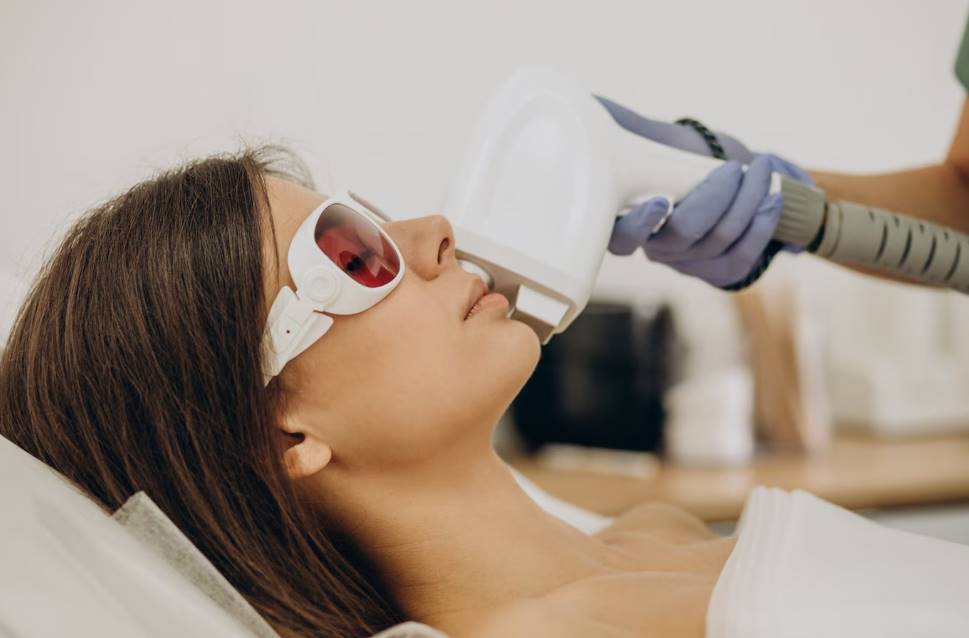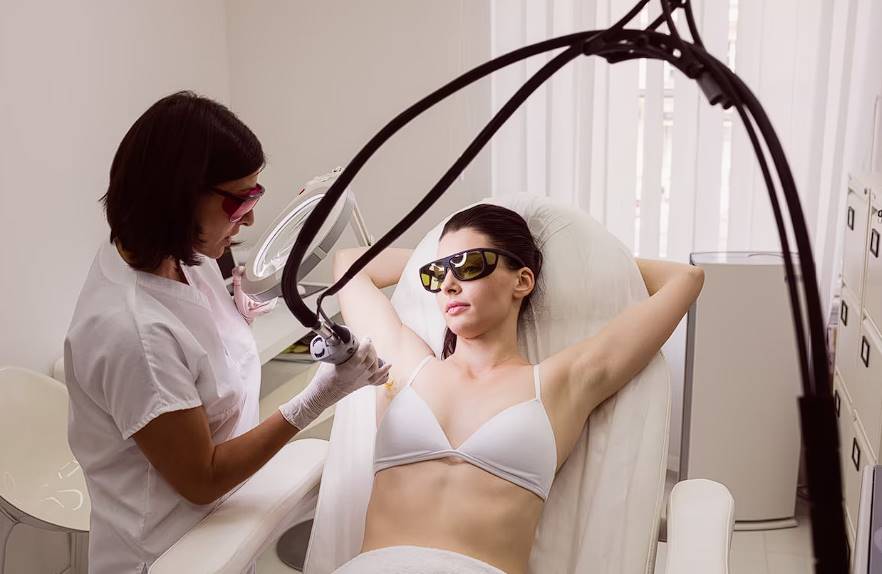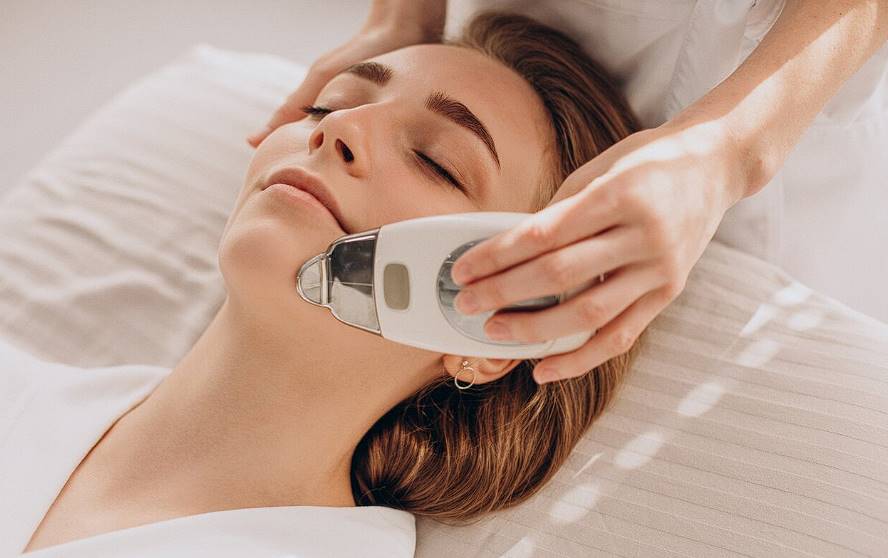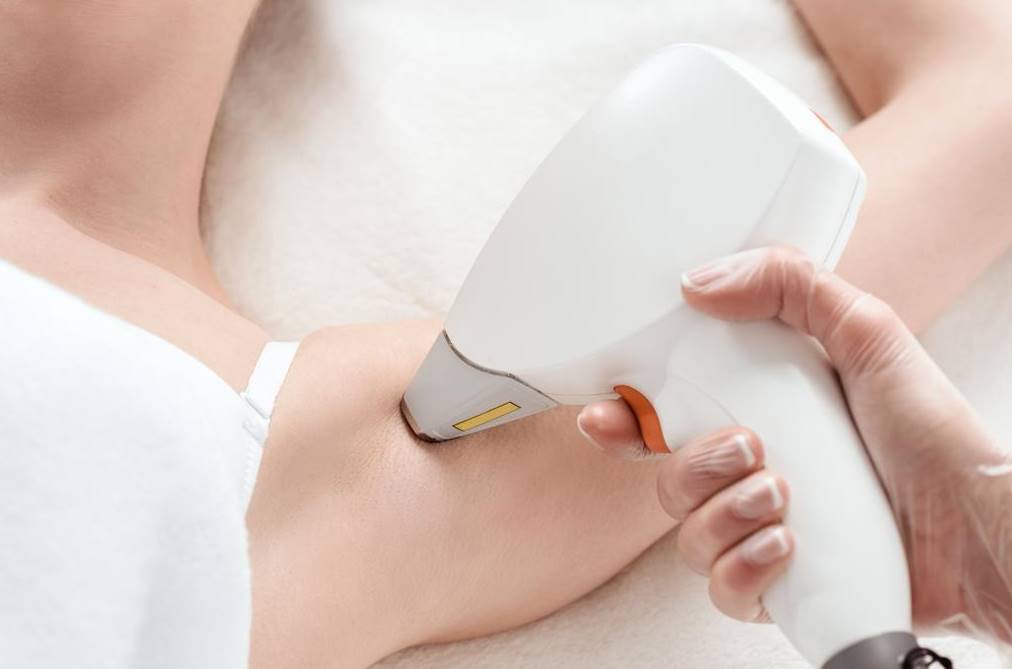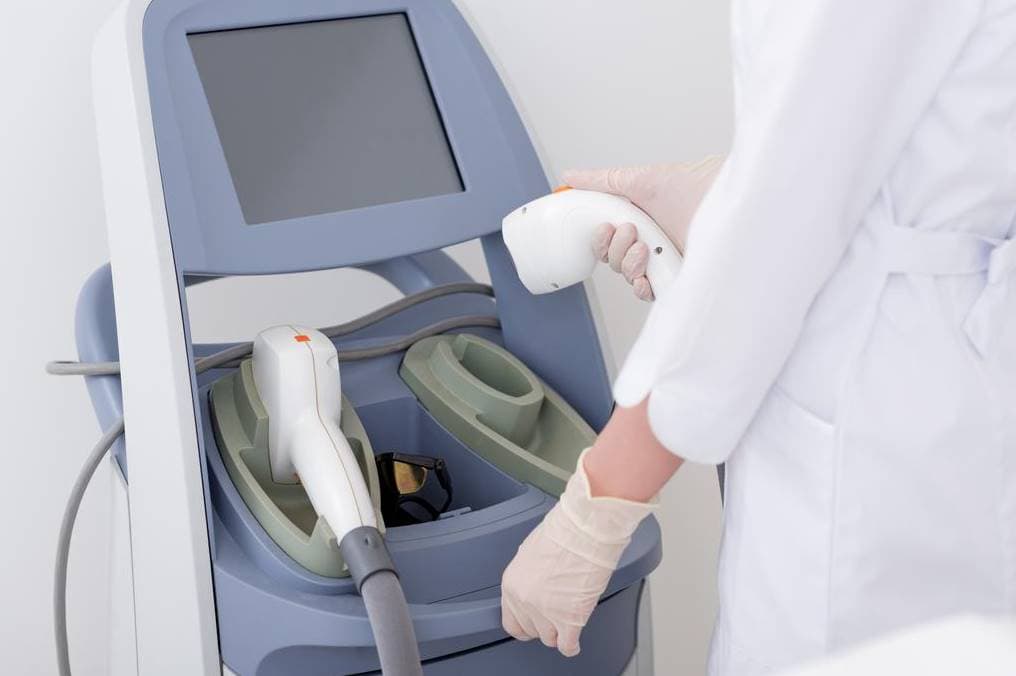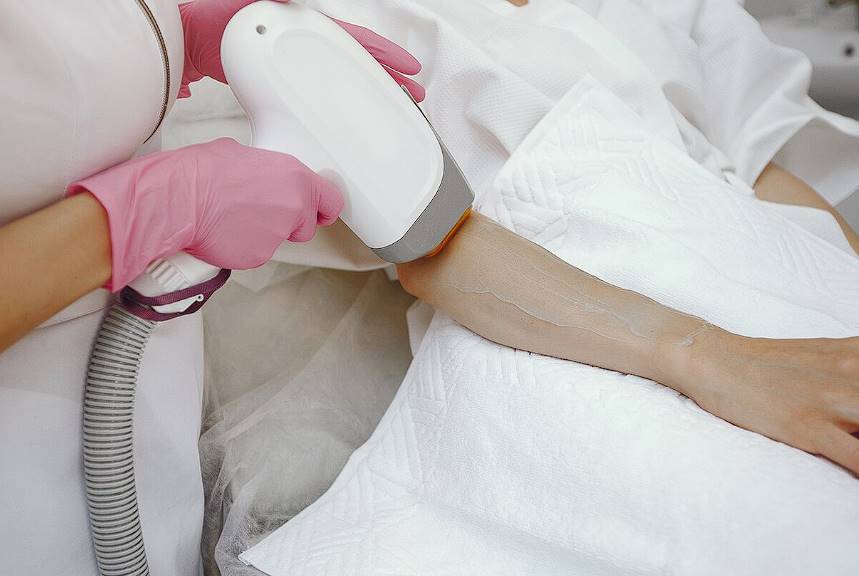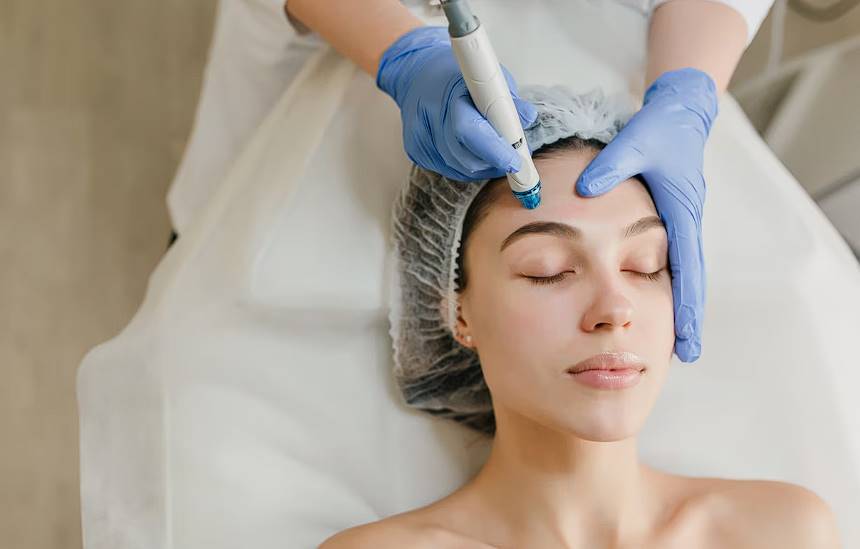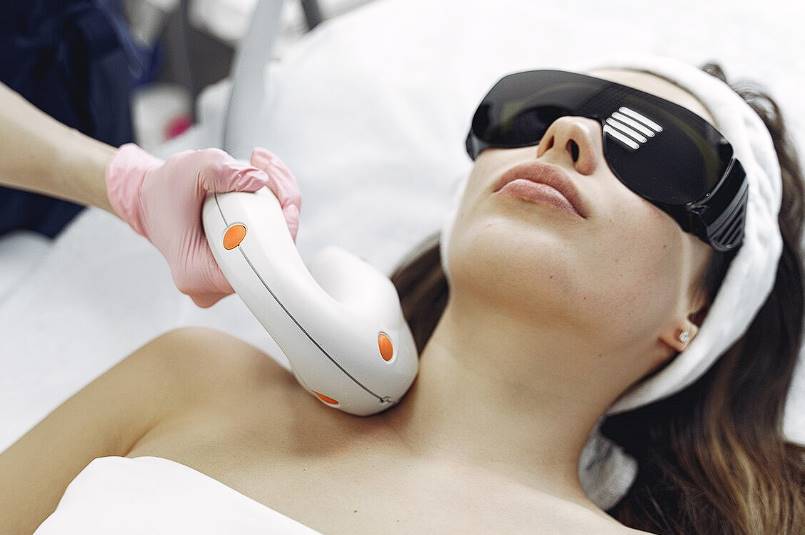More and more guys are turning to laser hair removal to help them accomplish their aesthetic and lifestyle goals in today's environment. This book is your indispensable travel companion on the road to hair-free skin, whether you're sick of everyday shaving, looking into alternatives for a well-groomed appearance, or just inquisitive about the process.
In what follows, we will explain in detail how laser hair removal works, what to anticipate during treatment, and any special factors that need to be taken into account for males. Our goal is to equip you with the information you need to make educated decisions about your grooming regimen, whether you're a complete novice or a seasoned veteran.
If you're ready to learn about the benefits of laser hair removal and take charge of your own grooming routine, then we should get started with this in-depth tutorial. This is the first step towards softer, more assured skin.
Understanding Laser Hair Removal
In the medical field, lasers, which are focused beams of light, are utilised to eliminate undesirable hair. The procedure entails the emission of light that is absorbed by melanin, the pigment found in hair.
This light energy is then converted into heat, which causes damage to the hair follicles. These follicles are tiny sacs roughly the size of blood vessels, and damaging them inhibits or even halts the growth of new hair.
It should be noted that laser hair removal typically provides a significant reduction in hair growth over an extended period, rather than permanent removal.
Multiple sessions are generally required to achieve optimal outcomes, and periodic maintenance treatments may also be necessary. While the procedure is most effective on individuals with a light complexion and dark hair, it can be safely administered on people of all skin tones.

Why Doing Laser Hair Removal?
This is the second half of a comprehensive look at laser hair removal for guys. Many men choose to have laser hair removal done for various reasons. The argument that hair is not aerodynamic has been made often in the past. It impairs your speed, which is particularly problematic in sports like swimming where milliseconds count.
Others choose to shave in order to prevent uncomfortable rubbing or scratching. However, a shave won't do anything to fix the problem. Men also get laser hair removal for a few more reasons.
Excessive Body Hair Or Aesthetics
Men who are self-conscious about unwanted hair on their back, neck, chest, or elsewhere may find laser hair removal to be a life-changing experience. The ways in which many guys put their treatment to use vary.
It's true that some men would rather keep some hair than shave it entirely off. To have a more masculine hairstyle, many guys opt for laser hair removal. Thinner and sparser is what they're after.
Hair removal on the chest and back can help men feel more comfortable in their own skin, which is typically a source of insecurity for males. They may even decide that they prefer not having any hair at all and have a full-body shave.
Hygiene
The widespread myth that hair is inherently dirty affects both sexes equally. In fact, the primary function of hair around private body regions is to shield them from dirt and germs.
Manscaping is a popular choice among men since it reduces itching and scratching. Some people may choose to do so in order to alleviate the bushiness and possible itching caused by hair during the warmer months. Some males simply have naturally hairy privates. Since there would be less hair to pick up from the floor, there will be less of a need for thorough cleaning.
Easier Facial Grooming
The third most prevalent motivation for men to engage in manscaping is discussed in this comprehensive guide on laser hair removal. Men generally shave once every day. Even yet, most men will always have a shadow over their beard region despite having to do it daily. Darker and thicker hair will continue to grow back as well.
Men often seek to reduce the volume of facial hair to make the shaving process less cumbersome, particularly if they are plagued by the problem of ingrown hairs—a subject that will be elaborated upon in later sections of this guide.
Repeated sessions of laser hair removal can decelerate the rate at which facial hair grows back. Once a male client is content with the state of his facial hair, he has the option to cease the treatment.
Furthermore, laser hair removal can offer relief to those experiencing recurrent folliculitis, a condition characterised by inflamed hair follicles that often appear as tiny white-headed pimples. For individuals who find conventional methods like shaving and waxing too harsh on their skin, laser hair removal emerges as a highly suitable alternative.
Ingrown Hairs
Ingrown hairs can occur after waxing or shaving. Curly hair is the result of having your hair chopped or shaved in the opposite direction that it grows. The hair won't be able to break the skin's surface, so it will remain buried and perhaps grow inflamed or infected.
The only proven method for treating PFD, or pseudofolliculitis, is using a laser. Shaving can cause inflammatory lumps surrounding hair follicles, which can be red or black. Basically, they are ingrown hairs that develop at odd angles and might result in scarring. Ingrown hairs may completely disappear after just two treatments, and your skin may return to its normal state.
Save Money
Now we come to what is arguably the most compelling case for male laser hair removal. The myth that laser hair removal is too expensive is one we've already addressed. It's true that it's an expense in the near term, but the payoff is substantial in the far future.
Just think about how much you'll spend on razors, cartridges, cream, and aftershave throughout the course of your lifetime. A modest automobile may possibly be purchased with that sum.
Although laser hair removal requires an initial outlay of cash for at least six sessions spread out over the course of a year, once the follicle is damaged, the hair is permanently removed and will not come back. No more razors, and even if you keep some facial hair, it will require minimal maintenance.
Benefits Of Laser Hair Removal For Men
There are a number of reasons why guys, and particularly male sportsmen, are considering laser hair removal.
Long-Lasting Results
Laser hair removal is a permanent alternative to temporary treatments like shaving, waxing, and lotions. It drastically slows hair growth, and there's a chance it might not grow back at all.
Reduced Ingrown Hair
Laser hair removal is a great option for men who suffer from ingrown hairs after shaving or waxing. Ingrown hairs are both unpleasant and ugly, but they are less likely to occur after laser hair removal for males.
Precision
Hair follicles are what laser hair removal affects specifically, not the skin around them. This makes it perfect for those hard-to-reach places like the back, chest, and shoulders.
Efficiency
When it comes to removing hair from huge regions, laser hair removal is the way to go. Time required for the process ranges from 15 minutes to an hour, with the latter being more typical.
Time-Saving
Laser hair removal is a great time saver for men with hectic schedules because it does not necessitate regular maintenance like other hair removal treatments. The results of laser hair removal on the entire male body are long-lasting.
Improved Confidence
Unwanted hair can make many guys feel uncomfortable and self-conscious. Laser hair removal offers a permanent cure to unwanted hair, which can boost one's confidence and sense of self-worth.
Hygiene
Hair isn't inherently dirty, but too much of it in the wrong places can harbour bacteria and cause smells or irritation. To feel more hygienic or to lessen the likelihood of skin discomfort, some men may choose to get laser hair removal on their genitalia or other intimate areas.
Beard Shaping
By focusing a laser beam on the beard, hair can be removed from problem areas like the neck and cheeks. The treatment aids in the prevention of ingrown hairs and other shaving-related skin irritations, and helps men attain a more defined beard form.
Preparing For Laser Hair Removal
There are some precautions you should take before getting laser hair removal done. The first step is to contact a dermatologist or other qualified medical professional who can assess your skin and hair types as well as your general candidature for the operation.
Any preexisting diseases, drugs, or recent sun exposure must be disclosed, as they may affect the course of treatment. In addition, avoid plucking or waxing the area for a while before the treatment so the laser can more accurately target the hair follicles.
The Laser Hair Removal Process
Wearing protective eyewear and possibly having a cooling gel given to the treatment area will help keep you comfortable throughout the operation. The doctor will target the affected area with laser light pulses from a portable equipment.
The length of a session varies with the dimensions of the affected area. Some people feel discomfort, similar to snapping a rubber band, although many new laser systems have cooling devices to make the experience more tolerable.
Safety Considerations
In most cases, laser hair removal is risk-free, but only if you have it done by trained professionals at a reputable clinic or medical spa. Be sure that any lasers used in the facility are approved and that all necessary safety precautions are taken.
Redness, swelling, and changes in skin colour are possible but uncommon side effects. You can lessen the likelihood of negative outcomes by following your doctor's recommendations before and after treatment.

Post-Treatment Care
It is crucial to stick to the aftercare instructions given by your laser hair removal specialist after each treatment. Things like hot showers or strenuous exercise can aggravate the treated region, so it's best to avoid them.
Soothing lotions or aloe vera gel can also help. In most cases, you'll need to schedule multiple sessions, spaced out a few weeks apart, to see the best benefits.
Side Effects And Results
The use of a laser to remove unwanted hair is a risk-free technique with no downtime. The treatments don't hurt, take very little time, and can drastically inhibit hair growth.
Laser hair removal is effective because it destroys follicles while they are actively growing. Some dormant follicles may survive to produce fresh hair growth at a later time. That's why it's ideal to spread out your treatments across a few visits, giving each follicle time to complete its own cycle. This method guarantees a permanent elimination of hair.
Factors such as ethnicity, skin tone, hormone levels, and hair density can affect the final outcome of laser hair removal. But in the end, you get the same thing: irreversible hair loss.
Conclusion
Laser hair removal is a popular treatment for guys who want to look better. In this process, light is sent out that takes the hair pigment melanin and turns it into heat, which hurts the hair follicles. This damage makes it hard or impossible for new hair to grow. Laser hair removal usually slows down hair growth over a long period of time instead of getting rid of it completely.
Men choose laser hair removal for a variety of reasons, such as having too much body hair, wanting to look better, keeping clean, making face grooming easier, or getting rid of recurrent folliculitis. Some men like to keep hair on their back, neck, chest, or other places, while others choose a more masculine haircut.
Men also use laser hair removal to keep their bodies clean. Manscaping cuts down on itching and scratching, which makes shaving easier. Laser hair removal can also help reduce the amount of hair on your face, especially if you have hairs that keep growing back into themselves.
When you wax or shave, the hairs get pushed under the skin and can become sick or irritated. The only way to treat PFD (pseudofolliculitis) that has been shown to work is with a laser. After just two treatments, ingrown hairs can be totally gone, leaving the skin in its normal state.
Laser hair removal is a great way for men to make themselves look better. It gives guys who want to look well-groomed an easier and more effective way to do so.
Laser hair removal is a good choice for men, especially athletes, because it is cheap and lasts a long time. It takes at least six sessions spread out over a year, and once the hair is damaged, it is gone for good. Benefits include long-lasting effects, less ingrown hair, accuracy, efficiency, saving time, more confidence, better hygiene, and shaping the beard.
To get ready for laser hair removal, you should talk to a dermatologist or other experienced medical professional, tell them about any diseases, medications, or recent sun exposure you have, and don't pluck or wax the area. The laser light waves come from a portable device, and the length of each pulse depends on where the problem is.
Safety concerns include having the process done by trained professionals at a reputable clinic or medical spa, making sure that all lasers used are FDA-approved, and following the doctor's instructions before and after treatment. Side affects and results can be different, but hair loss is always the end result.
Laser hair removal can have different results depending on things like race, skin tone, hormone levels, and hair growth. But the long-term benefits of laser hair removal make up for the initial costs, and it gives men who want a more defined beard a permanent option.
Content Summary
- Increasingly, men are opting for laser hair removal for aesthetic and lifestyle reasons.
- The book serves as a comprehensive guide to achieving hair-free skin.
- Laser hair removal offers an alternative to daily shaving.
- It provides in-depth information on the laser hair removal process.
- The procedure uses lasers, which are focused beams of light.
- Lasers target melanin, the pigment in hair.
- The light energy from lasers is converted into heat.
- This heat damages hair follicles, inhibiting hair growth.
- The procedure results in a significant reduction in hair growth.
- Permanent hair removal is not guaranteed; reduction is more likely.
- Multiple treatment sessions are typically required.
- Maintenance treatments might also be needed.
- The treatment is effective for a wide range of skin tones.
- Many men opt for laser hair removal for varied reasons.
- Some believe that hair is not aerodynamic, affecting performance in sports.
- Others choose the procedure to prevent discomfort from hair rubbing.
- Laser hair removal offers a solution beyond regular shaving.
- Some men use the treatment to reduce excessive body hair.
- It can be used for aesthetic reasons or to achieve specific hair styles.
- Laser hair removal can boost self-confidence.
- The procedure can address hygiene concerns.
- Manscaping can reduce itching, especially during warmer months.
- Another benefit is easier facial grooming.
- Daily shaving often leaves a shadow in the beard area.
- Laser treatments can reduce the volume of facial hair.
- It's an alternative for those with ingrown hair problems.
- Laser hair removal can offer relief from recurrent folliculitis.
- Laser treatment is the proven method to treat pseudofolliculitis.
- Ingrown hairs can lead to inflammatory lumps.
- After some laser sessions, ingrown hairs may completely disappear.
- In the long term, laser hair removal can be cost-effective.
- Laser hair removal can permanently inhibit hair growth.
- One major benefit is long-lasting results.
- The procedure reduces the occurrence of ingrown hairs.
- It offers precision in targeting hair follicles.
- It is efficient, especially for larger areas.
- The process saves time compared to other hair removal methods.
- It can enhance self-confidence and self-worth.
- The procedure can also aid in better beard shaping.
- Before undergoing the procedure, one should consult a medical professional.
- Pre-existing conditions and medications can affect the treatment.
- The laser hair removal process may involve protective eyewear and cooling gels.
- Treatment duration varies based on the area being treated.
- It's vital to choose a reputable clinic for the procedure.
- Some possible side effects include redness and swelling.
- Post-treatment care is essential, including avoiding hot showers.
- Several spaced-out sessions are needed for optimal results.
- Laser hair removal effectively destroys actively growing follicles.
- The outcome can vary based on factors like skin tone and hair density.
- The primary benefit is the permanent reduction or elimination of hair.
Frequently Asked Questions
Laser hair removal is a cosmetic procedure that uses concentrated beams of light (laser) to target and destroy hair follicles. The laser's energy is absorbed by the pigment in the hair, effectively reducing hair growth. It's a safe and efficient method for long-lasting hair reduction.
While advancements in technology have made laser hair removal more versatile, it's most effective on individuals with light skin and dark hair. However, specialized lasers like Nd:YAG can be used for darker skin types, and options exist for lighter hair as well.
Most people describe the sensation as mild discomfort, often likened to a snapping rubber band. However, newer laser technologies come with built-in cooling systems to minimize discomfort during the procedure.
Multiple sessions are typically required, usually spaced 4-8 weeks apart, to target hair in different growth phases. The number of sessions varies by individual and the treatment area. Results can last for months to years, with occasional maintenance sessions as needed.
Common side effects include temporary redness and swelling, which typically subside within a day or two. More severe complications like burns or pigment changes are rare when performed by a qualified technician, making it a generally safe procedure.



